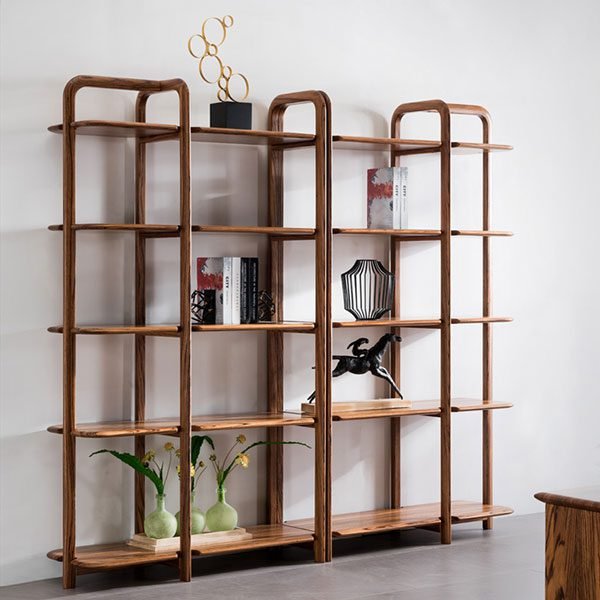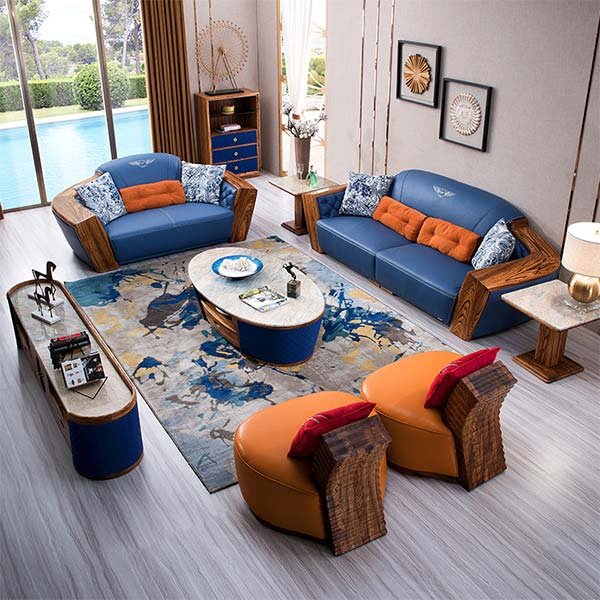“Harmonize your space with timeless elegance: Expert insights on pairing wooden furniture with neutral color schemes.”
Choosing the right wood finish for a neutral color scheme
Choosing the right wood finish for a neutral color scheme is crucial in creating a cohesive and harmonious look in your space. The combination of wooden furniture and neutral colors can bring a sense of warmth and elegance to any room. In this article, we will explore expert insights on how to pair wooden furniture with neutral color schemes.
When it comes to choosing the right wood finish, it is important to consider the overall style and mood you want to achieve in your space. Different wood finishes can evoke different emotions and create different atmospheres. For a more traditional and classic look, opt for darker wood finishes such as mahogany or walnut. These finishes add a touch of sophistication and richness to a neutral color scheme.
On the other hand, if you prefer a more modern and contemporary look, lighter wood finishes like oak or maple can be a great choice. These finishes have a lighter and more natural appearance, which can complement a neutral color scheme beautifully. Lighter wood finishes also tend to make a space feel more open and airy.
Another important factor to consider when choosing a wood finish is the undertone of the neutral colors in your space. Neutral colors can have warm or cool undertones, and it is important to choose a wood finish that complements these undertones. For example, if your neutral color scheme has warm undertones, opt for a wood finish with warm tones such as cherry or teak. This will create a cohesive and harmonious look in your space.
On the other hand, if your neutral color scheme has cool undertones, choose a wood finish with cool tones such as ash or birch. This will help create a balanced and unified look in your space. It is important to note that the undertones of the wood finish should not clash with the undertones of the neutral colors. Instead, they should work together to create a cohesive and visually pleasing look.
In addition to considering the style and undertones, it is also important to consider the texture of the wood finish. The texture of the wood can add depth and visual interest to a neutral color scheme. For example, a distressed or weathered wood finish can add a rustic and vintage touch to a neutral color scheme. On the other hand, a smooth and polished wood finish can add a sleek and modern touch.
When pairing wooden furniture with a neutral color scheme, it is important to create a balance between the wood and the neutral colors. Too much wood can make a space feel heavy and overwhelming, while too little wood can make a space feel cold and sterile. Aim for a balance by incorporating wooden furniture pieces in different sizes and shapes throughout the space.
In conclusion, choosing the right wood finish for a neutral color scheme is essential in creating a cohesive and harmonious look in your space. Consider the style, undertones, and texture of the wood finish to ensure it complements the neutral colors in your space. By following these expert insights, you can create a stunning and inviting space with wooden furniture and a neutral color scheme.
Incorporating wooden furniture as accent pieces in a neutral room
Incorporating wooden furniture as accent pieces in a neutral room can add warmth and character to the space. However, it is important to choose the right pieces and pair them with the right colors to create a cohesive and visually appealing look. To help you achieve this, we have gathered expert insights on how to pair wooden furniture with neutral color schemes.
When it comes to incorporating wooden furniture in a neutral room, it is essential to consider the style and finish of the furniture. For a modern or contemporary space, opt for sleek and minimalistic wooden pieces with clean lines and a smooth finish. These will complement the neutral color scheme and create a harmonious balance. On the other hand, if you have a more traditional or rustic room, consider choosing wooden furniture with a distressed or weathered finish. This will add a touch of charm and authenticity to the space.
Another important aspect to consider when pairing wooden furniture with neutral color schemes is the color of the wood itself. Different types of wood have different undertones, ranging from warm to cool. For example, oak has warm undertones, while maple has cooler undertones. It is important to choose wood with undertones that complement the neutral colors in the room. This will create a cohesive and visually pleasing look. If you are unsure about the undertones of the wood, consult with a professional or do some research to ensure a successful pairing.
In addition to considering the style and color of the wood, it is also important to think about the color palette of the room. Neutral color schemes typically consist of shades of white, beige, gray, and taupe. These colors provide a calm and serene backdrop for the wooden furniture. To create a cohesive look, choose wooden furniture in shades that complement the neutral colors in the room. For example, if you have a room with cool gray walls, consider pairing it with wooden furniture in cooler tones, such as ash or birch. This will create a harmonious and balanced look.
To further enhance the pairing of wooden furniture with neutral color schemes, consider incorporating other elements and textures into the room. For example, you can add soft textiles, such as cushions or throws, in complementary colors to create visual interest and add warmth. Additionally, consider adding plants or natural elements, such as a woven basket or a jute rug, to bring a touch of nature into the space. These elements will not only enhance the overall aesthetic but also create a sense of harmony and balance.
In conclusion, incorporating wooden furniture as accent pieces in a neutral room can add warmth and character to the space. To successfully pair wooden furniture with neutral color schemes, consider the style and finish of the furniture, the undertones of the wood, and the color palette of the room. Additionally, incorporate other elements and textures to enhance the overall aesthetic. By following these expert insights, you can create a cohesive and visually appealing look that will transform your space into a stylish and inviting haven.
Creating a cohesive look with wooden furniture and neutral colors
Creating a cohesive look with wooden furniture and neutral colors can be a challenging task. However, with expert insights, it is possible to achieve a harmonious and stylish design. In this article, we will explore how to pair wooden furniture with neutral color schemes, providing you with valuable tips and ideas.
One of the key aspects of creating a cohesive look is to choose the right shade of neutral colors. Neutral colors such as beige, gray, and white provide a versatile backdrop for wooden furniture. These colors create a sense of calm and balance, allowing the natural beauty of the wood to shine through. When selecting neutral colors, consider the undertones of the wood. For warm-toned woods like oak or cherry, opt for warmer neutrals like beige or cream. For cooler-toned woods like maple or ash, choose cooler neutrals like gray or white.
Another important factor to consider is the texture of the wooden furniture. Different textures can add depth and interest to a neutral color scheme. For example, pairing a smooth, polished wooden table with a textured, woven rug can create a visually appealing contrast. Similarly, combining a distressed wooden cabinet with a sleek, modern sofa can add a touch of rustic charm to a contemporary space. Experimenting with different textures can help create a cohesive and visually interesting look.
In addition to texture, the scale and proportion of the furniture should also be taken into account. When pairing wooden furniture with neutral colors, it is important to strike a balance between the size of the furniture and the size of the space. For smaller rooms, opt for lighter shades of neutral colors and choose furniture with a more streamlined design to create an illusion of space. In larger rooms, darker shades of neutral colors and larger, more substantial pieces of wooden furniture can create a sense of coziness and intimacy.
To further enhance the cohesive look, consider incorporating accent colors into the neutral color scheme. Accent colors can be introduced through accessories such as throw pillows, curtains, or artwork. These pops of color can add visual interest and create a focal point in the room. When choosing accent colors, consider the undertones of the wood and select complementary shades. For example, if you have a warm-toned wooden dining table, consider adding accents in shades of red or orange to create a harmonious look.
Lastly, lighting plays a crucial role in showcasing wooden furniture and enhancing the overall design. Natural light can bring out the warmth and richness of the wood, while artificial lighting can create a cozy and inviting atmosphere. Consider incorporating a mix of ambient, task, and accent lighting to highlight different areas of the room and create a layered and well-balanced look.
In conclusion, pairing wooden furniture with neutral color schemes requires careful consideration of shade, texture, scale, and lighting. By following these expert insights, you can create a cohesive and stylish look that showcases the natural beauty of the wood while maintaining a sense of balance and harmony. So go ahead, experiment with different combinations, and transform your space into a haven of timeless elegance.
Заключение
Заключение: Эксперты рекомендуют использовать нейтральные цветовые схемы в сочетании с деревянной мебелью для создания элегантного и гармоничного интерьера. Деревянная мебель добавляет теплоту и текстуру, в то время как нейтральные цвета создают спокойную и уютную атмосферу. Важно выбирать оттенки дерева, которые хорошо сочетаются с выбранными нейтральными цветами, чтобы достичь сбалансированного и стильного внешнего вида.



